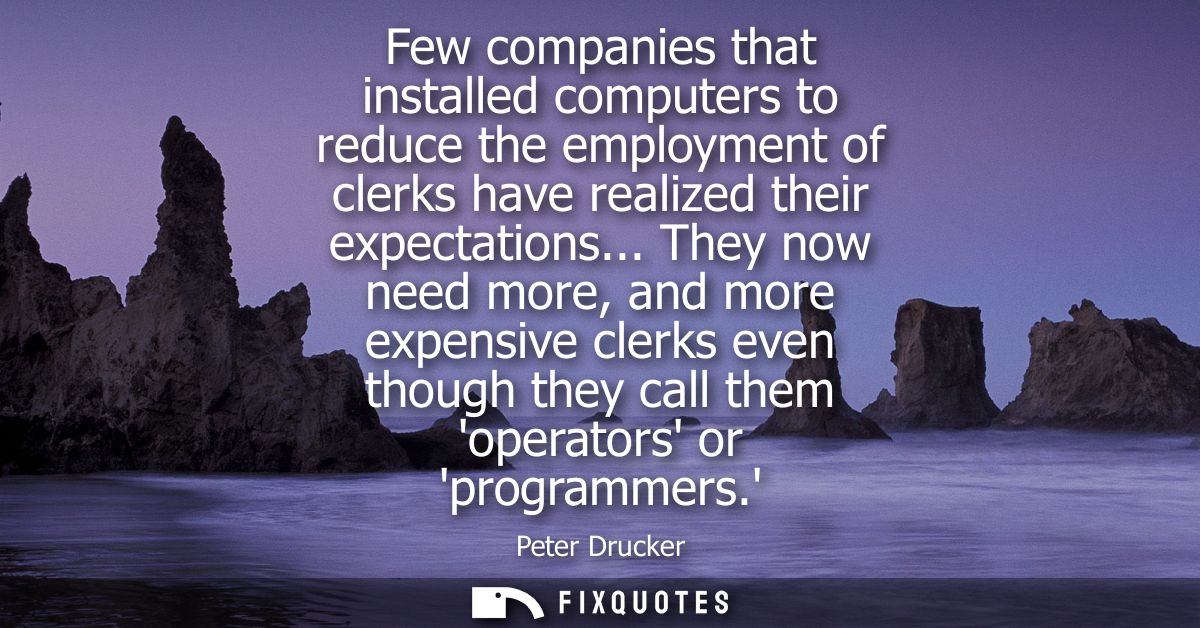"Few companies that installed computers to reduce the employment of clerks have realized their expectations... They now need more, and more expensive clerks even though they call them 'operators' or 'programmers.'"
About this Quote
Peter Drucker’s observation encapsulates a paradox at the heart of technological progress in business. Companies invested in computers with the intention of reducing administrative costs, expecting that automation would supplant the need for numerous clerks handling routine paperwork. The ideal was straightforward: machines would handle repetitive, rule-based tasks, freeing managers from swollen payrolls and menial errors, leading to higher efficiency and profitability.
However, Drucker highlights an outcome contrary to those initial hopes. Rather than diminishing headcount and lowering personnel expenses, the adoption of computers increased the demand for skilled workers. The nature of work shifted rather than vanished. Simple clerks were replaced or supplemented by operators and programmers, roles requiring more advanced technical knowledge and, as a result, commanding higher salaries. Employment numbers did not necessarily decline; instead, the composition of the workforce evolved, and overall personnel costs often rose.
The underlying insight is about technological change and its ripple effects. Computing transformed the type and complexity of work rather than eliminating work wholesale. While some mundane jobs disappeared, new challenges arose: machines required oversight, maintenance, updates, and, perhaps most importantly, people capable of conceiving, writing, and debugging the increasingly critical software. Organizations discovered that far from reducing their reliance on human capital, they became more deeply entwined with technologically proficient employees.
Moreover, automation facilitated new kinds of business activities that were not feasible previously; the efficiency gains often invited more ambitious projects, increased data handling, and greater organizational complexity. The myth that machines alone inherently lead to savings gets upended, progressively, enterprises pay for talent that can maximize the value of their investments.
Drucker’s remarks remain relevant, illustrating how each technological leap transforms the workforce, not by simply making people redundant, but by amplifying the value and necessity of specialized human expertise.
About the Author

